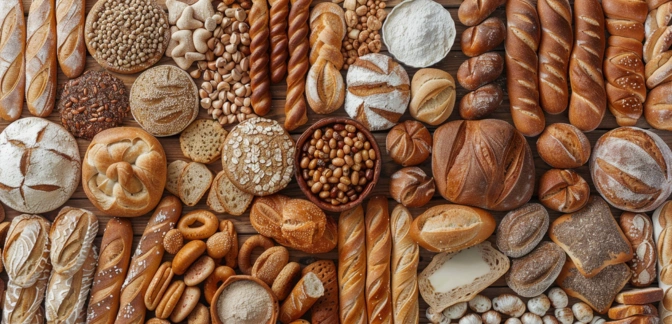Sandwich Bread — Nutrients, Health Benefits, And Shopping Tips

Written by Listonic Team
Last update on September 4, 2024
Sandwich bread nutrients
Nutrition facts
Amount per 100 g
Calories
🔥 265 kcal
| Nutrition per: 100 g | Value | % Daily Value* |
|---|---|---|
| Carbs | 50 g | 18.18% |
| Fiber | 3 g | 10.71% |
| Sugars | 5 g | 10% |
| Glycemic Index | 70 | - |
| Protein | 9 g | 18% |
| Sodium | 491 mg | 21.35% |
| Total Fat | 3 g | 3.85% |
*The % of Daily Value (DV) tells you how much a nutrient in a serving of food contributes to a daily diet. 2,000 calories a day is used for general nutrition advice.
3 g
🥕 Low Fat Content
5 g
🍏 Low Sugar Content
Sandwich bread facts & tips
Health benefits
- Provides sustained energy from carbohydrates, making it a good source of fuel for the body and brain.
- Contains essential vitamins and minerals such as iron and B vitamins (if enriched), supporting overall health and well-being.
- Can be high in fiber if made from whole grains, promoting digestive health and regular bowel movements.
- Versatile and convenient, suitable for making a variety of sandwiches and toast options.
Health risks
- High carbohydrate content particularly in sandwich bread made from refined white flour, which can cause rapid spikes in blood sugar levels, particularly concerning for diabetics.
- Low nutrient density as sandwich bread made from refined flour offers limited vitamins or minerals compared to whole grain options.
- Potential for high sodium content in some commercial sandwich breads, which can contribute to hypertension and increased cardiovascular risks.
- Potential for artificial additives such as preservatives, flavorings, or dough conditioners in some commercial sandwich breads, which may cause adverse reactions in sensitive individuals.
How to choose sandwich bread
Sandwich bread should be soft and springy to the touch, with an even crumb and no hard crusts. The slices should be consistent in size and thickness, providing the perfect base for a variety of sandwiches.
Avoid sandwich bread that is dense or has visible mold, as this indicates it is not fresh. Bread bags that are not sealed properly or have holes should also be avoided, as the bread may dry out or become contaminated.

How to store sandwich bread
Sandwich bread should be stored at room temperature in its original packaging or an airtight container. Proper storage keeps it soft and fresh for up to a week. Keeping it tightly sealed is important.
Air exposure can cause bread to become stale. Avoid storing in the refrigerator, which can dry it out. Ensuring the packaging is tightly sealed and storing in a cool, dry place will maintain its softness and freshness.
✅ Extra Tip
How long does it last?
Sandwich bread can last for 3-5 days at room temperature when stored in an airtight container. For longer storage, sandwich bread can be frozen for up to 3 months. Proper storage helps maintain its softness and flavor, making it ready for sandwiches and toast.
What to do with leftovers?
Leftover sandwich bread can be used in a variety of savory and sweet dishes. Use it to make sandwiches, toast, or grilled cheese for a quick meal, or cut it into cubes and bake until crispy to make croutons for salads or soups. Sandwich bread is also great when used to make French toast by dipping it in an egg mixture and frying until golden.
Use sandwich bread in a bread pudding by tearing it into pieces and mixing with eggs, milk, and spices, then baking until set. If you have a lot of sandwich bread, consider making a batch of bread crumbs by toasting the bread and blending it into crumbs, perfect for coating meats or vegetables. Sandwich bread can also be used as a base for bruschetta or crostini with toppings like tomatoes, cheese, and fresh herbs, or blended into a stuffing with herbs and vegetables. For a quick snack, enjoy sandwich bread with peanut butter, jam, or honey, or serve it with a side of soup or salad for a light meal.
👨⚕️️ Medical disclaimer
Discover products from other categories
Listonic Team
Fact-checked
Our editorial team checked this article to make sure it was accurate at the time of publishing it.
Get the top-rated shopping list app

sandwich bread
1 piece
Outline







